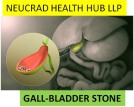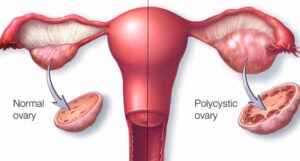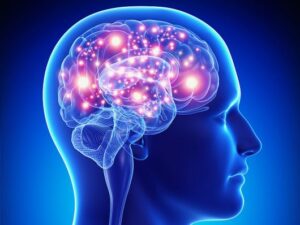Gall-bladder Stone: Cause and its treatment

Dr. Shuvomoy Banerjee, PhD; Neucrad Health Desk, January 17,2022
Our body temporarily stores bile in the gallbladder. Basically, bile is produced in the liver. Bile reaches the small intestine and helps in digestion of food. When bile pigment bilirubin and cholesterol lipid are accumulated in large quantities in bile, it sometimes hardens and forms gallstones or gallbladder stones. These stones can range in size from very small to quite large and even in number they can be multiple. If large gallstones obstruct the bile duct, various pathological symptoms arise like pain, soreness, digestive problems etc. In this condition, gallbladder surgery is required immediately.
What kind of gallstones can there be?
Gallstones are generally of two types. E.g.
- Cholesterol gallstones: About 80 percent of gallstones are of this type. If there is excessive cholesterol in the bile, yellow-green gallstones appear.
- Pigment gallstones: Large amounts of bilirubin can accumulate in the bile, which can lead to small and dark pigment gallstones.
What are the symptoms of gallstones?
- Pain in the upper abdomen, below the right rib
- Pain in the back and right shoulder
- Vomiting, diarrhoea, indigestion, gas and heartburn
- Chronic abdominal pain
- Fever and shivering
- Yellowing of eyes and skin
- The colour of the urine is black and the colour of the stool is pale
What causes gallstones?
- Under normal circumstances, cholesterol should not be present in the gallbladder. Cholesterol is supposed to dissolve in bile. However, if you eat too much fatty foods, cholesterol can deposit and accumulate in the bile with substantial amounts and it becomes hard to form gallstones in association with the bile salts.
- In cases of liver infection, cirrhosis, jaundice, etc., the liver produces excessive amounts of bilirubin. These bile pigments can harden and form gallstones.
Whose gallstones are more likely to be?
- In many cases gallstones can occur if the family has a history of complex gastro-intestinal disease
- Forty plus women are more likely to have gallstones
- People with obesity and a sedentary lifestyle are more likely to have gallstones if they take a high-fat diet and a low-fibre diet.
- If you drink little water
- Women who take birth control pills and hormone replacement therapy are more likely to have gallstones
- Long-term sufferers of diabetes and Crohn’s disease
- Those who want to lose weight in a short time by irregular fasting and diet are also more likely to have gallstones.
How do I know if I have gallstones?
After an initial blood test, ultrasound, CT scan, endoscopy, MRI scan, HIDA scan, etc. can be done to find out if there is a gallstone. Damaged gallbladder, including gallstones, is then removed using medicine and surgery if necessary.
What can cause serious physical problems due to gallstones?
- Acute cholecystitis or inflammation of the gallbladder may occur. Gallstones can grow in size and rupture the gallbladder. It causes severe pain and fever.
- If the bile ducts and pancreatic ducts are blocked due to gallstones, jaundice and pancreatitis may occur.
- If the gallbladder becomes blocked due to gallstones and stops working, severe infections can occur. If the infection spreads too much in the blood, it can lead to sepsis and even death.
- Prolonged periods of gallstones can sometimes lead to gallbladder cancer.
How can gallstones be prevented?
- Need to drink adequate water every day
- The presence of fibre and olive oil, fish oil in the diet reduces the chances of gallstones
- It is better to exercise some time daily
- For no reason, it is better not to try to lose weight by fasting and dieting
- The use of hormone pills for family planning should be reduced
- Use of drugs that can damage the liver should be stopped
References
- Njeze GE. Gallstones. Niger J Surg. 2013;19(2):49-55. doi:10.4103/1117-6806.119236
- Jones MW, Weir CB, Ghassemzadeh S. Gallstones (Cholelithiasis) [Updated 2021 Mar 26]. In: StatPearls [Internet]. Treasure Island (FL): StatPearls Publishing; 2021 Jan-. Available from: https://www.ncbi.nlm.nih.gov/books/NBK459370/
- Gutt C, Schläfer S, Lammert F. The Treatment of Gallstone Disease. Dtsch Arztebl Int. 2020;117(9):148-158. doi:10.3238/arztebl.2020.0148
- Sanders G, Kingsnorth AN. Gallstones. BMJ. 2007;335(7614):295-299. doi:10.1136/bmj.39267.452257.AD
- Lee JY, Keane MG, Pereira S. Diagnosis and treatment of gallstone disease. Practitioner. 2015 Jun;259(1783):15-9, 2. PMID: 26455113.











